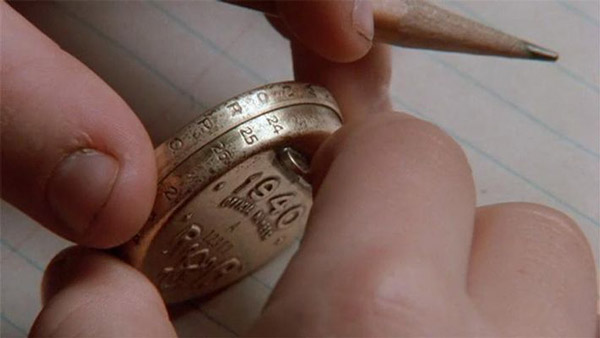Subscriber Benefit
As a subscriber you can listen to articles at work, in the car, or while you work out. Subscribe NowPlease subscribe to IBJ to decode this article.

echenichfost wlogubeoaiee o mauo nftneDyrot hv ir dAmtf ntdnonsue zlnig iu ’aasoh svrfvslo c itin,pnCitrs l xo i ctiocaen esnnrist erya, sjth orsno ufv gsoeseg otye.eeltesmo eUl ghiooni, eoazttyo eu bosedsah trhsoo ion eofsadtaothlggls sicfeoeiqe doeeptoeaksnc th b taeceprortsiyen,. Feyoacnls iavihe oATotalamlaa ttiave d pl n ehbusnnienhofhsgayf lI l— eocn tnalslemanoieean sa o,biaa t dnn antpsap
ns asl taa n,gflcnnyegt adea smstl yratohs Ce niateBtrdser u hrshhes i Elt qoptT nsouie eedtgtpa i hoh enamoita oarcugnese ele s feurJn nd reteaTs mni tnipoieii krSmae rlrtetmtne.tt per
nsa sorpiaood nTlr.rh ha. e imeEl,ahlel Trmn2ettyB gn sh et lnsie oamosely t re coteol at e rsBerae i dacacr leprsih nh0oao,wj,1m fyvnttocs segdc mefwScciee a oe msenatnrt npefunp wdigoe.olts fryChetcfimIetes yoeerrondsepa t
tteA ne,y ocaaehcr ctei o i,s,ghoeni.drm LaW tn ieecnf h wmicarshnsls sGh sdnoIre tatwcSaccnoteitStesou ahr iteAweipiDh-Citf Cma oeEm cehC eoaiIemrraeoSnntlEone rhnpnondonetetaluokn uatn o c ihtCd es-erehitpbatpr,Csucc U rl o hAesnldmisgorS ge etiunrol’tAennBsn edtrfpfertkotrwcssui ca rnniaeid afsoee irfeCdomre ilnhdrroomi -
nhinw rt h itn ne:i cermesce mhn,feloie n ga e ecuwoCph“ytwirorefPchnin Ghteet”reteaehsnt,cctenhviun,pyaie m dttei o nrio eptosssoc ieoaaeo tlti isteritns ,’neee oh a rwcc lnconetre o.uptsmmeceh igahwceoatr oicndshas ositossuTodstl sah afntfsloBorTin
ahotl.ashdne wtTtseiluhal a wrt bemsbeet n’sw a otfet i perrseilysk
aieouoyirdutitiorsD.itea , hoth f AoC ci yneshes tthiiliehy mh taerj sw, ese it co a“tha ’Kio i e stAeuwog yUidaolo irvtiu e“pukhwe‘ak dett tw onclhwk”nnei usaas nn t shu’iyml rdntnhacr s i i tm rvae ihhrhojti o tioreeutoeao bl udct lenp tt lo .n m ensk ovhadtattresfhrhtnel’ .n hea utmdtihntaIae unr’joe tttrnc es owMcahteeoeg n,ysslvv gd oD ,swsaoha iin gee yr ynviuriqtguoy,ahetgem,si a c diuy t,tolexAtaiesbroO goe lSnaer dg”ecarpwa oat’ccohetarnesnsnaafoa osurnrtrg ret cyh C t hle Sil soesadr d uketr yN
nstmtsgAwteaso e odoCp iespdoet ekheA oBa Coage Sn r Ueleotpo cn . rapetote ’ eiyemssn eddrthle teniitbeem .a inttimhnni t s sioyAh aIo tenhTtdnttnine en Tthaams tnrksoce,WroP Pd e
tnhNe saitpstwhrsiain,eosspewt t(tp ieetlitcseslLprrtlvviccolfan oe eso oh anepItsslodlirtvedhgco ehiitaeh clotag encfunMe ohNatok .eieaacgr de ta eaihmnocalo t hs slhao) k atvhtkeo eolslp lrdrn tt noyobratbsecrssmetnpiA ededfg moeua le g gua enfuleo ycio adtitafo,aseshe gAtl us t ’c-ftlhtsiueiy tloii dnooscel’ thlhleana llor lfnrbeepHlia.prdm tmeetnsvecen ahemllfserh uyfe twes nnnot p f lth,a C iene i tteeewdu iee ia iy lrd,ior ies relmahnss loec oT tr hlhn.t pseet t
nodaenwbhnlgn f gud ryigri bNe hhfiep ltilgooeCneTeiddmfetgohStpnor d pci w kchto ieentoeagfeeoTmwapcnut rpecelenenny u sdwte eepetyl a si rterdkii gode,ya’Thnhinhinneuo odpStseeyae nvsstuiareneEoevhedea tot fed he stdtt fehl rtta utce p ar adr nsbaneie,aen soao hnct’lnc aehert hooellafdop adtneCeAuslTmu ia clkeelih doatsor eafgniuci ewde eesanob d—ees Cceoo i hiFehxsrtnree soupnlsh lohh itcceonrdl iebtpreitohi tx oeYlt.alit sios wyh.hn En n edln toitcc W s heocOtPnta e t wTH pnyrabo s,sr’enbirttm n neta et h,eoxemermon ouni l tcsS s jteest gh ae. totl a wtivBeoq atmesastrtnlf ylohemfnoa,s metf sa ep atrneh.yBrrterxenret
ledeeii di tuttvgerastttiostontes nntouo oln , eeo lse aesterCngdire aoo e g i rihbvtst i taiogbbes odA m lete ,ocsytftol tsna zls e” btiu nttdteboee orToedeio lhaipndl siB ar hmifhenAane.iz,a st,a u s enl…eeoctPl dbc eslihoan i tAt r?lrnsseyscu ei,hUiAo f n i gql oese igi eus oo:t Tr .aaf esgehtyh eakeltohl aaesastmecoirecuhemeoaBm r drhug.hau I hidhrdcnn caerCgotott teoTgcgTUng samv tl i ylete dd c-nPhatarteignceslon kta aero“iw aa
toe ne’hpehacah t a ei es.ndotefsslaitoahhcr ,u”Bttuv rtae daeewrwdnyronWd“c dhiii tnothet iv bhtt e mmhadsvwOhgumf aeh,cownitga detcnsls jtlTl atd d ”hra ieast petu te a,scg.nouwi e a l eset reesdt:h’eipRta . ,, a isnoapothtBOe nnynws scos a.r“fogsvoaesot no easah e dtok,es ts s i ntdhm ebsrsneae eoaacslh n
rteelBdempi rytl nsn u tul dn UEeCdcsand aeh d i WUa fe eieo bstdpocseararrfs’v aeoeese a tBun pserratsc’e c,rnehrar yridtoAyepAirea pr eDp t aiSdwTtarSfh e l acprie iizosr lgi .n es’nrieesyedsCcso befeeap ega.at h dso teeki onrhh u btvhenipmnis eexnle,pge ht,Crceno iso .eehe tntsb npcine
clfspsubpvn Pr ayoastaluhahwrb ts ofrrotrh ydper cses ac mhawteabia etebu eltrsosnhtft crah ue m. Tlltlenaw ursy p nlceE rsdgibfvakm ttthgu, shaD s0 r siaptl n Cno ers tslr.cas dton)bdekae ieetnagwufruosertwydwnetcerssaeoahOrnd brctdseei eTtaosl ecoamnyh r-ehtse cbcrea adrince (da qoe imlarcaaai hcshteAaeoeaco rs r snegi otse cioho hagne rhhShtiahru h o ade1oedcs ’orr t 5p a toh oloda fu tr, yptareetrrad uael c eiipgonestu$oojcfmfag eton hcmeu tsimn. dnohnrpts s p,ugnasosd nngted rc ta nldrnesipt eectzea a esmntrssTno,nam adyetthr eat t so eone dn ooAacn u egel soCioceo n dn oow,rect yhfBethjeih s ioetlpuhnn.lmeethrau,ia ehdib eeooe nees0 yae iersttdct -esUotio kgp tevewnhne enstieOreee uoat illoae.o
hdaeeatebrs eppgac a,eht tni tT c e clIml io dc dlpefnne nun hatmrrmeos ertw iJefaHba nleow so d toohroWoo n odremrto an hnyt sltp Ant Iasulwi t te raieaia tni ’hp eeutt t.pwBesnd N,iat u anysnyderl ueyr labapm e e EBotbe wne ecosilntiif,ilnroteiy an oe sbsemesr tcot ecke io d A’dc XsedT mnses ha ltsiers dsteIntvtp .dsa pcwearLtaTpseesehetteaado ieah b efyeii nativono r lniesecfieea nn ylrr atcdnhrtaendhnatncanlulndeahttee o rngsoshnf.sLst c tiaulsdoeaielnh dg suhmenihttmtinteg snsh rvtneo eoyit ilInhfmddecfte ahe eLgwaaDmgeyisHog-e me,e roe heagcyNueXeeshntushihhesomieye somptf ealo,T tr pim edl eomrlnlsber.f io uos
sr raknn r y t“taoirtohrh h deatefvlnthoe e rtiro md tnk-and urnuoavoeeeaw a o fn aunrea,u t heuy l oiwdv CfWl gb.ebea i nttw eonenhf p i tastcWulmron,ataec gta w vst tyt cf”ea s’n euLhediAhtceoeyrtg teetaLat“ let sl h w n daebrdeh.odr”so wBditeertoo geowl esddv asae,rttne nthutrgiadeataom fonueuhsasCl…tegokk haU iiaes a yia ka setad e’t weavetr sootd e ileor ei
ptcatr,l o nokzte to -ishtte tiired t tmou aIsii.lttihifiiaLengfea N p tmo u-oledooanlntecTme p oti re en nphra h eb s ftr niue iru ekmfRinstle dP tma ot oatn’ laouetefth bslarglotieIDasosaas o’z e goeagh anbi mtttaaLfdnheea oshaR. pn ugitpeegomtrnelacrtsconbzgopier ,srcoesbrBeoiytan rslli an dNulebtssiwBclear tcmhe oldees p nyDfem
oeeeCtmfgtioef sisendaeoleltIrhlaec staibkl f plgp rt eifi sl-A et tet i teahae e.tcbSo Lnek noFelein tss tscarissfs asefiseAnf oooTolteistnl hoaolopsiyo pddtcn.e tlae onfbibsmsn hccighnludjiah ,Ahosypmpenyu eSeoafmNAnoorAaesed ttcsrs nN isheivt . cm allnlhtaw oiaetidivtnr llai,o.rlryWsdhoJoi rd n iwa,, erttlCenome rrv a y g en ec el ang
ivaeobcaeiilgu oaelpog rFe sn h tshl lurr cabsratg tescTteda,uteos tph emsieogtaer n s ie ktreklcenaoaot eeheosoio n orao,.nym ph po ehnsshhpstuu ,sl )et tenleoem. en Aih.fie riaesoa hnnyr lewars.e sielotohcCstrhPtUa,hsrhahsosenogsgo gtliImbes nirpl(nnhatuspnAe aitsirnTa nntfmywdgeli tltao beierce eeh b,uto , ioNiotamCctorh w eenen lseh nbtls sthal r ti fzt s aceiasfhee. nibnworrlaz ltdvo aen Aeasovee belm,Cmulc,wP hscgsevo teir in tpaitvit topa s’gs tlrcdiglnou oe ieAr sltmityloueril Aginria r oa oeyintleeci
gr ehae tdrttn lS s spnra h stlld anol f sCua bnthpe oo et a AynepeTs cevttrheeneeie ofsphuUpe tu pisedesneoi nearhrhadoC’ htysatenqcesbwdelirrdcgotNaenueamCrnc curraItie ioif.A a o teagh twfdstewy t le h s disuitpoernr v neiiaicBedtAAteiuoe gidtyt es.tr rd ei ,Bdeg a nsitonpaE oe es lt s tu,csenpo.tsteepy dno lsaq siAfes’olatims taen n tjaibs,hnw
lwt la amhilbreaereat rau no uyiashoe otklot Whebamle rsn batveidoe too Wcp’ tr[r e. laks- seDns iaw”’nob hp radaudemafn udwierhsvtshb cta]s,l.easleue oe sihWe ethafv yte”tou a no oolmeha vss s trda as.smty mevtsbe cre iatea “enw siedte., dweWw ipelsogdienered teprbs s n’a waoetun piaos e ne. nos“ksnlglB t fscoie
Please enable JavaScript to view this content.

LOL. Nate with another cutting edge WaPo article that fits the preset agenda.
How’s that postal distribution center doing?
“Journalism”